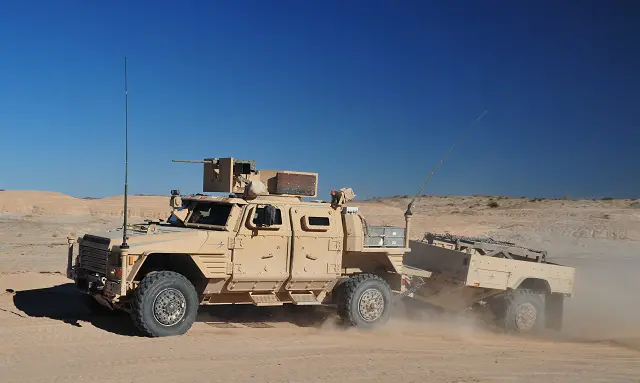| a | |||
 |
|||
Official
Online Show Daily News Eurosatory 2012 International Land Defence & Security Exhibition Paris, France 11 - 15 June 2012 |
|||
Lockheed Martin at Eurosatory 2012 Press Release |
|||
| Sunday, June 17, 2012, 09:40 AM | |||
| Lockheed Martin’s JLTV Design Improved for Next Phase of U.S. Competition | |||
Lockheed
Martin will know this summer if its government-proven Joint Light Tactical
Vehicle design will move forward in the U.S. Army-Marine Corps competition.
Drawing from over 40 years of vehicle integration experience, Lockheed
Martin improved its offering for the next phase with a lighter, more affordable
model, without sacrificing the impressive performance displayed in the
2011 testing phase. “Our improvements removed hundreds of pounds of weight from our design, which was already proven in helicopter lift tests,” said Scott Greene, vice president of Ground Vehicles at Lockheed Martin’s missiles and fire control business unit. “With more than 160,000 combined testing miles behind us, we’ve proven our JLTV is reliable and that we meet protection standards of many existing mine-resistant vehicles in combat operations today.” JLTV is the U.S. program that will complement and replace the decades-old Humvee military vehicle. In a time when improvised explosive devices present significant risk to troops, JLTV has advanced armor and hull designs to keep users safe. Lockheed Martin’s JLTV was proven against the blast protection levels common on all-terrain mine-resistant vehicles, yet weighs 40 percent less. Despite this level of protection, JLTV is a lightweight family of vehicles that are helo-transportable, including the CH-47 and CH-53. This returns mobility to deployed users who need light tactical vehicles for modern-day missions. |
|||
 |
|||
| Production-ready |
|||
 Pictures: Lockheed Martin |
Lockheed Martins JLTV Design Improved for Next Phase of U.S. Competition
- Posted On















